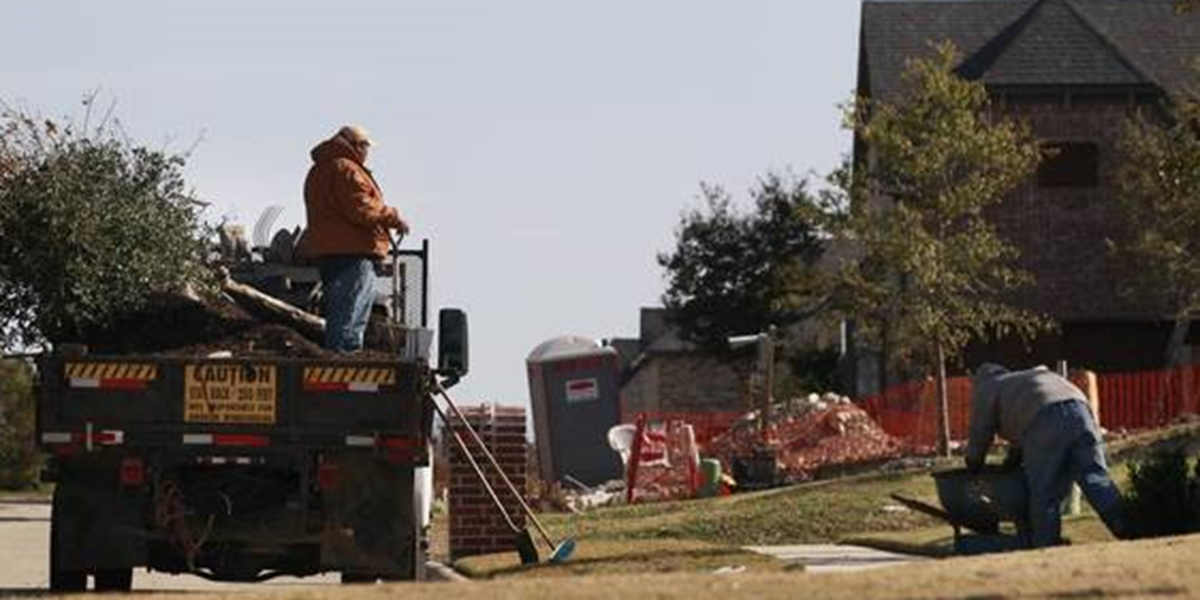
Dallas Tree Ordinance Apparently Is Not a Priority

Landscape trees are planted at a housing development near Grady Niblo Road in Dallas, where the property was clear-cut of trees. Dallas Morning News Staff Photo/2011.


Published January 27, 2015 By STEVE HOUSER
Trees clean our air, water and soil. They also add greatly to our health and sense of well-being as well as the quality of life we enjoy. However, trees are lower on the Dallas list of priorities than plastic bags.
The plastic bag ordinance flew through the city process to reach approval, while recommended changes to the existing tree ordinance have taken four years to develop and another four years of sitting on the shelf.
Why is it important to move forward with revisions to the city’s tree ordinance? Trees offer solutions to many social and environmental woes. According to USDA Forest Service research, larger mature trees provide over 70 times the environmental benefits of replacement or smaller, newly planted trees. We simply cannot replace large trees during our lifetime, even if doing so were financially feasible.
They who are uninformed fear an improved tree ordinance would discourage development when the exact opposite is true. Healthy trees and forests are a critical component to any thriving urban infrastructure. A robust economy and a healthy ecology can coexist, but it requires finding a delicate balance. It also requires a clear understanding and respect for the many benefits that healthy trees and ecosystems offer.
In December 2005, Mayor Laura Miller established the Urban Forest Advisory Committee as a permanent part of city government. The committee serves in an advisory capacity on matters of environmental stewardship, specifically the urban forest and the care and planting of trees by advocating sound arboricultural and urban forest management practices. The committee is authorized to make recommendations on plans, programs or city codes which are advisable for the care, conservation, planting, pruning, removal or disposition of trees citywide.
In October 2006, the committee established monthly meetings with prominent developers, city officials, the city’s chief arborist, the Dallas Builders Association and other interested parties. The basic premise from the committee was the need to find common ground to improve the tree ordinance and to encourage more sustainable urban planning. The committee was willing to allow tree removal without requiring mitigation (or replacement) as long as the development was consistent with the guidelines expressed by regional planning experts with Vision North Texas.
The monthly meetings were productive and resulted in a consensus on most primary issues with the exception of a few points that the group members agreed to disagree on. It was the first time that opposing factions, known for friction among them, successfully worked toward the common good. A “matrix to encourage sustainability” was developed to reward developers that utilized sustainable practices.
In 2009, the committee held the three required public stakeholder meetings to gather input and released final recommendations. The Dallas Morning News Editorial Board noted on June 19, 2009, that “the accompanying matrix — the so-called calculation of tree mitigation offset — could be baffling to all but algorithmically inclined tree experts.” As a result, the current recommendations have replaced the matrix with the Sustainable Sites Initiative.
The City Council’s Quality of Life Committee was briefed regarding the details in early 2010. Four years later, the ordinance was scheduled to start the process of moving forward in December 2014. That was delayed (again) to February or March.
The current ordinance allows removal of all trees on a site and requires replacement only for protected species of trees.
Should the committee’s recommendations make it to City Council during the review process, the citizens of Dallas will be better served and Dallas will have a chance to keep up with surrounding communities quickly becoming more sustainable, walkable and green. Dallas deserves better than business as usual.
Steve Houser is chairman emeritus of the Dallas Urban Forest Advisory Committee and also sits on the board of advisers for Vision North Texas.
